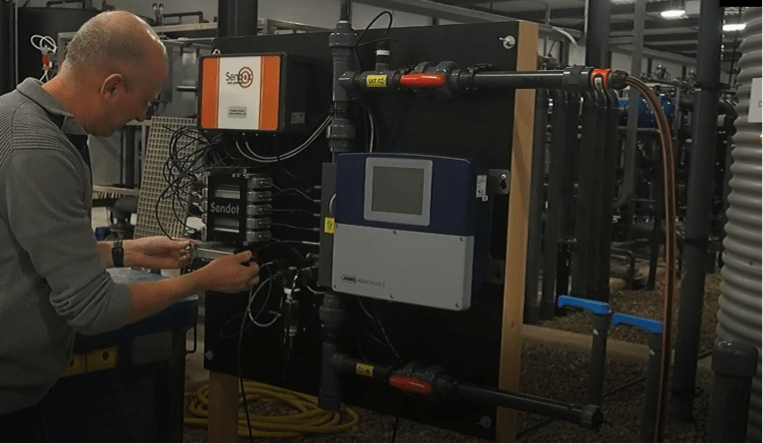SnelWaterQuality unit is being tested at Brabant plant
Tholen – Due to increasing water reuse in glasshouse horticulture, there is an increasing need to quickly obtain information about water quality, so that when necessary, rapid interventions can be made in the water and nutrient supply of the crop and in water purification.
In an ongoing trial in search of methods and concepts tailored to horticulture in order to be able to make timely adjustments to water quality, Brabant Plant is therefore now being given a trial of a SnelWaterKwaliteit unit for three months. The aim of the 'Water Quality in Pictures' project, which started on April 1, 2019 and will run until December 21, 2020, is to develop methods and concepts tailored to horticulture.
“We hope for a result that will make a method/tool available that will allow growers to find out more quickly what their water quality is and what trends are visible in it so that they can make better and faster adjustments,” says Erwin Gräfe of Sendot, who developed the unit. , it together.

Sendot Research's SnelWaterQuality unit was installed last week to participate in the business processes at the plant nursery for three months.
Measure new parameters quickly
Smaller and smaller sensors are available that can measure more and more parameters quickly and at relatively low cost. The project is investigating whether it is possible to measure a number of new parameters online (chlorophyll, UV fluorescence, oxygen, turbidity, redox, conductivity, oxygen consumption), because this will quickly provide a picture of the water quality, including the presence of algae, organic substances and microbiological activity, the ionic balance and the effectiveness of the purification of the water.
Sendot Research, which installed the unit, is involved in this part of the project, as is Groen Agro Control. The Control in Food & Flowers Foundation and KWR Water are also involved in the measurements.
KWR is investigating a method to determine the effectiveness of the disinfection more quickly: this currently takes a few days, because a microbiological culture method is used for this (germ count method).
That takes too long to be able to make adjustments: the results must be available within a day. KWR therefore compares different methods (with and without sensors) on their sensitivity in order to quickly determine the effect of disinfection on different micro-organisms.
Diversity
“For the time being, this is the only unit that will be tested,” says Erwin Gräfe of Sendot. “This unit was developed especially for this trial, you could call it a prototype. We use the unit to map the water quality of various water flows in the company. The parameters to be measured have been validated and the results can be followed in real time via a web server.”
What makes the unit special is the considerable diversity of parameters, Erwin explains. “We measure CF fluorescence for algae, UV fluorescence for humic acids, conductivity and pH and oxygen, but also oxygen consumption and redox potential.”
Brabant Plant first test company
During the trial period at Brabant Plant, samples are regularly taken to correlate the measurements of the instrument with a large number of analyzes that are performed on the samples to determine the water quality.
“The aim of this project and this test is to link the relationship between a number of easily measured water parameters to water quality. Brabant Plant is the first, but not the only test company to do this," says Erwin. “Other companies are also being selected where this system will be tested.”
Make quicker adjustments to water quality
The results of this project should make it possible to adjust the processes in horticulture more quickly in terms of water quality. It will potentially even be possible to control the removal of contaminants by certain pathogens and/or for specific crop types. Ultimately, this will yield knowledge and technology that can be applied throughout the entire horticultural sector, is the expectation of the researchers involved.
Consortium
The consortium involved in the project consists of the research organizations in the field of water quality in horticulture, the Control Food & Flowers Foundation and the KWR Watercycle Research Institute, the measurement and technology companies Groen Agro Control and Sendot, and Glastuinbouw Nederland, Plantum and Stowa as interest groups from the cultivation sector. The project is co-financed by TKI Horticulture & Propagation Materials.
